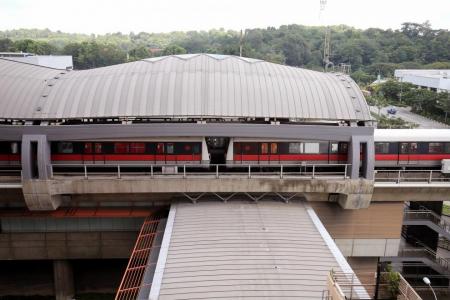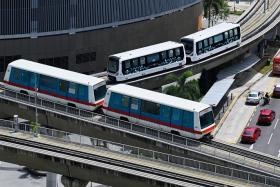Tuas West Extension on East-West Line to be isolated
Separation from rest of East-West Line could be for up to a month to allow further safety checks after Wednesday's train collision
The Tuas West Extension (TWE), which has four stations, will be isolated from the rest of the East-West Line (EWL) for up to a month, the Land Transport Authority (LTA) said in a press statement last night
This follows the accident involving two SMRT trains at Joo Koon on Wednesday, in which 36 people were injured.
The cause was traced to a defective trackside device that disabled a software protection feature when a faulty train was transiting between the old and new signalling systems.
It gave wrong information to the train behind the stalled train, causing it to lurch forward upon misreading the distance between them.
Given this finding, LTA and SMRT have decided to isolate for up to one month the operations of the TWE, which runs on the new system, from the rest of the EWL, which is still on the old system, the statement said.
This will enable LTA engineers to carry out further checks with signalling provider Thales.
After TWE operations were suspended yesterday for checks, Thales confirmed the old and new signalling systems are respectively safe for operation, LTA said.
The suspension is extended till Sunday and bus bridging services will be provided.
When TWE operations resume on Monday, the old and new signalling systems will be isolated.
This means train services on the rest of the EWL will end at Joo Koon, and services on TWE's four stations - Gul Circle, Tuas Crescent, Tuas West Road and Tuas Link - will run separately.
Commuters wishing to continue their journey can use bus bridging services between Joo Koon and Gul Circle, and will not be charged for a separate trip when rejoining the train network. As many as 100,000 commuters who use the 7.5km extension, which opened in June, may be affected.
In a separate statement last night, Transport Minister Khaw Boon Wan said he was "disturbed" that a critical safety software could be disabled by a defective trackside device.
He said: "Until this concern is fully addressed, we should not resume the link between TWE and the rest of EWL.
"I have told the team to keep separating the two sections of EWL, if need be until the entire EWL is ready to run on the new signalling system.
"This way we avoid having trains transiting from one signalling system to another with its attendant safety risk."
Assistant Professor Andrew Ng from the Singapore Institute of Technology's (SIT) engineering cluster told The Straits Times that isolating the two signalling systems was the "right move".
"This isolation is not sustainable in the long run, as commuters will want to have a seamless journey. But it's understandable that investigations have to be carried out," he said.
Get The New Paper on your phone with the free TNP app. Download from the Apple App Store or Google Play Store now


